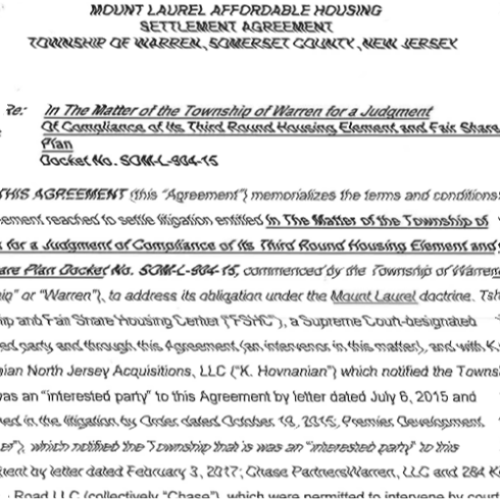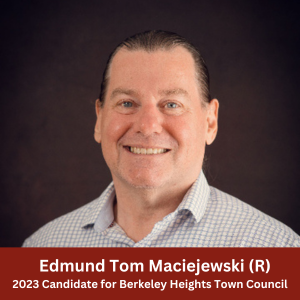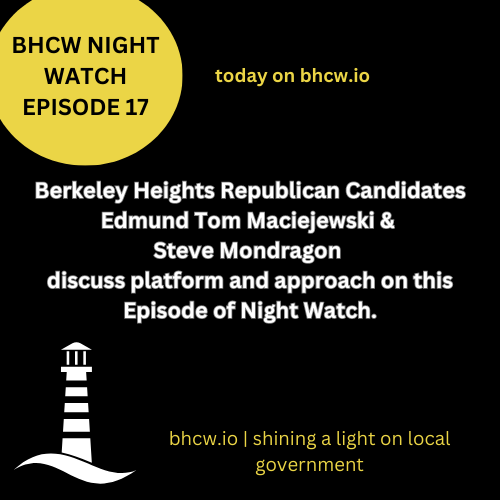What does this project tell us about local government, the power of advocacy and the future of Berkeley Heights?
This 26-acre previously untouched forest was cleared to make way for 192 units (48 affordable), part of Warren’s court-ordered affordable housing settlement.
This is the same property granted use of the Berkeley Heights Sewer Plant over a year ago.
Affordable Housing is a powerful force in this and many other states: it is mandated by state court, apparently has a massive demand and it has even been known to supersede environmental concerns such as wetlands (there is a lawsuit stating that AH has not been considerate of certain environmental aspects).
Ordinances are long outdated and beneath norms set by neighboring towns. Modern smart growth planning is growing in towns across NJ to mitigate development consequences. Town council has been sitting on this outdated stance since round one of affordable housing and none of these ordinances have been updated to leverage these developers.
The “Hills in Warren’s” is outside our township and therefore has little influence but I am hoping that one of these developments is consequential enough to get councils attention.
Is there something we can do for the future projects due within our town? As local politicians have been saying their hands are tied, are they really?
I can’t say this any more clearly: The Hills in Warren is a warning for Berkeley Heights.
But we’ve been warned before.
As concern grows about speeding traffic eastbound on Emerson, blind corners for pedestrians and driveways, and a slew of other pedestrian hazards, it becomes painfully obvious how late it probably is to act on this particular project.
But not too late for future projects if our town council acts. And starts to act now.
Most of our concerns about flooding, walking safety and other environmental or infrastructural impacts are things that could have been managed if council worked proactively. Driving efforts to get ordinances up to date. And for the already completed developments, they needed to act years ago.
They need to sit down with Commissions that are knowledgeable about the subject and collaborate for modern ordinances.
Because this is exactly how we manage developers that strongarm townships backed by state and fed policy:
You build ordinances they are still required to follow.
An ordinance we design in our township can not trump state or federal law. Aside from advocacy, yes, our hands may be mostly tied at those levels.
But locally, modern ordinances would help control the damage. And developers would be required to abide by them.
These developments are still bound by ordinances we pass and most of our relevant ordinances -tree protection, stormwater rules, sidewalk improvements, traffic calming, light pollution – are wildly outdated and the developers catch financial breaks with every underdone ordinance.
They wash their hands over our township when they only need to build the minimum width sidewalk, the cheapest parking lot flood lighting, stormwater dry wells that eventually overflow nor have a requirement to protect mature trees (can simply clearcut).
We have had development after development already happen in town. And it will continue. Housing, affordable housing, Live-Work-Play, mixed use development. These forces are strong all across the country and pushed at the federal and state levels. Housing is still reported to not be meeting demand (as of September 2023). But believe it or not, local levels have the tools (usually called Smart Growth) that dictate how these developments go in. These tools are what direct modernized ordinances.
Our council members need to step up and work with the committees and commissions most familiar with those tools to get these ordinances updated.
Council shall empower commissions to debate and write relevant ordinances. Together. Intelligent ones too that protect personal property while keeping builders accountable for the upset each development in fact does cause.
We can require builders to preference avoiding clear cutting forests, place traffic calming devices along affected streets, require best practices for stormwater (there are many options) or have limits on outdoor lighting that don’t flood a neighborhood with obtrusive lighting.
Currently, relevant Berkeley Heights ordinances do not do that while many other nearby towns do.
I am hopeful that The Hills in Warren is the last warning against town councils that say their hands are tied.
There was the wisdom to put “smart growth” language in the master plan which directs leadership on what type of modern ordinances to pursue. But this is futile unless leaders care to do it.
But first, our local politicians can not think we can’t do anything. We can. They need to work for this or else the township will absolutely suffer further.
The attitude that “we can’t do anything” is a cop out. It is being lazy. Whether we want to email our democrats, our republicans or our favorite council person, we need to press them. Otherwise we will suffer more warnings and “our hands are tied.”




